Large Call to Action Headline

Use this page to fulfill any requirements for subpage content on your website.
Lorem ipsum dolor sit amet, consectetur adipiscing elit, sed do eiusmod tempor incididunt ut labore et dolore magna aliqua. Ut enim ad minim veniam, quis nostrud exercitation ullamco laboris nisi ut aliquip ex ea commodo consequat.
Yoga, Asanas, Hot Yoga, CorePower Yoga: Elevate Your Practice
Yoga offers a transformative experience that transcends mere physical exercise, cultivating mental clarity and inner peace. This ancient practice, through its various asanas, builds not only flexibility and balance but also core strength. Each pose is designed to target specific muscle groups, promoting overall physical wellness and emotional stability.
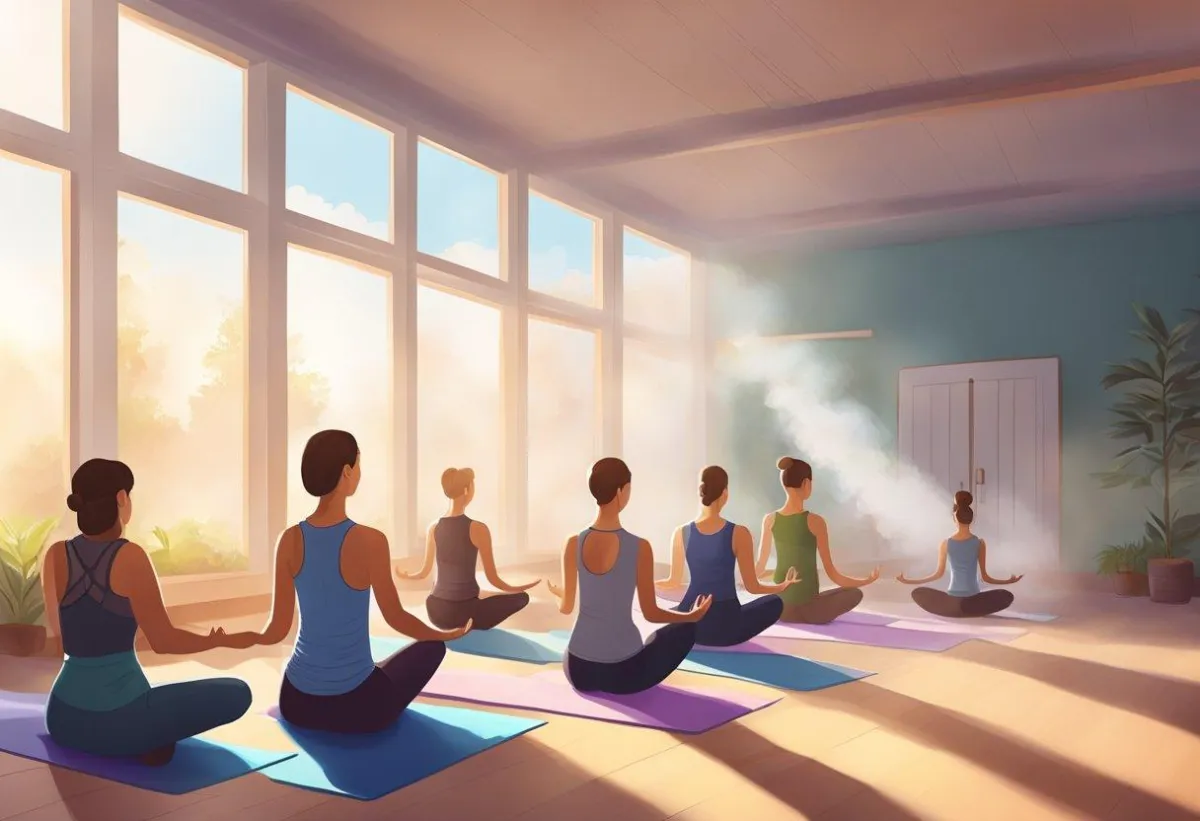
In recent years, hot yoga has gained popularity for those seeking a challenging workout. Practicing in a heated environment intensifies the experience, boosting cardiovascular fitness and enhancing detoxification. For individuals looking to deepen their yoga experience, CorePower Yoga provides a dynamic blend of physical intensity and mindfulness, catering to all levels of practice.
Whether one seeks physical improvement or mental tranquility, the diverse world of yoga offers something for everyone. Embracing these practices can lead to a more balanced, healthy lifestyle, inviting practitioners to explore and unlock their full potential.
Understanding Yoga
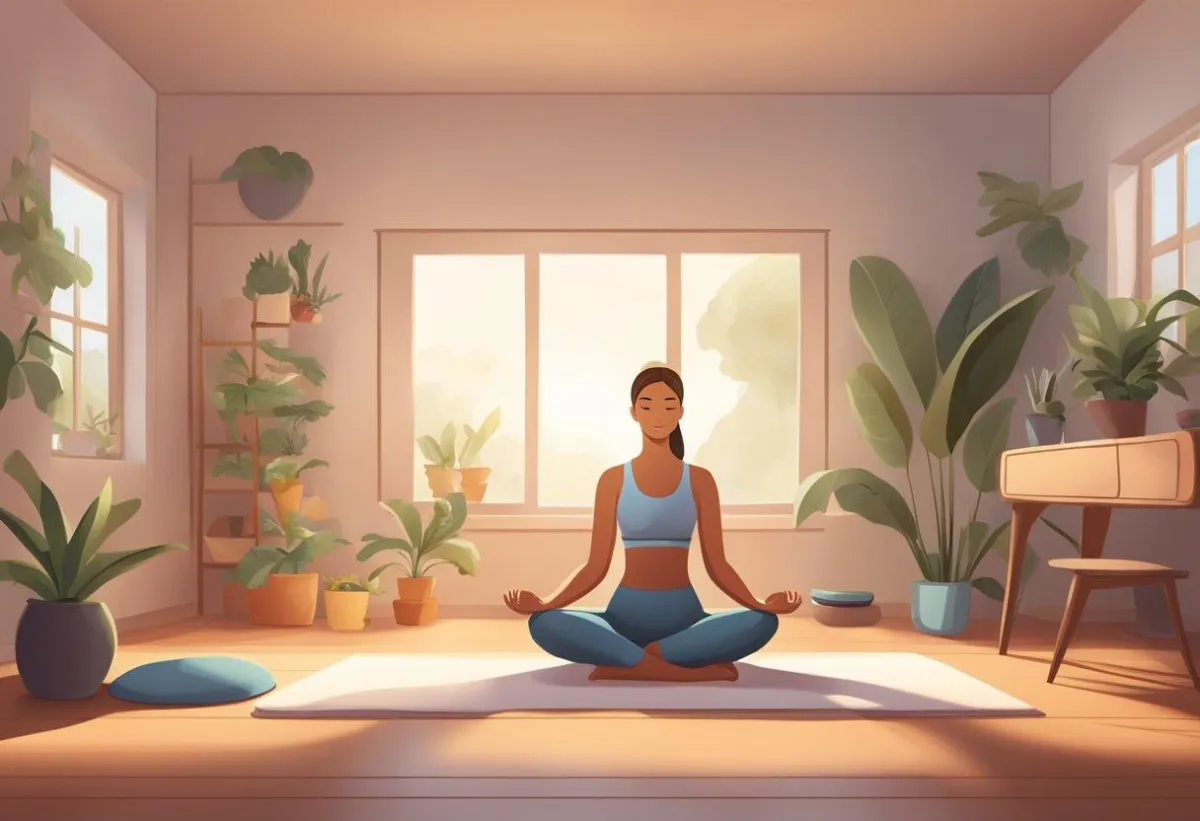
Yoga is an ancient practice intertwining physical postures, breathing techniques, and meditation. It has evolved into various styles, offering unique benefits such as improved flexibility, core strength, and mental clarity.
History and Philosophy
Yoga originates from ancient India, tracing back over 5,000 years. Rooted in Hindu philosophy, it is also influenced by Buddhism and Jainism. The word "yoga" means union, signifying the connection between body, mind, and spirit.
The practice historically includes eight limbs, focusing on moral discipline, physical exercises, and meditation. Traditionally, yoga was taught by gurus to students. Its philosophy highlights the importance of mindfulness and presence, fostering a balanced approach to physical and mental health.
Styles of Yoga
Various yoga styles cater to different needs and preferences. Vinyasa yoga
links breath with movement, emphasizing fluid transitions between poses. CorePower yoga
combines traditional elements with modern disciplines to enhance core strength and flexibility.
Hot yoga, ,including Bikram yoga, involves performing sequences in heated rooms, promoting detoxification and intense physical exertion. Each style offers distinct approaches while retaining core elements like focus and breath control, helping practitioners choose what aligns with their goals.
Benefits of Regular Practice
Regular yoga practice offers numerous benefits. Physically, it enhances flexibility and core strength, contributing to overall bodily health. The attention to breath and pose alignment improves mental focus and clarity, fostering a peaceful mind.
Practitioners often experience increased mindfulness, reducing stress and promoting well-being. Meanwhile, participation in styles like hot yoga elevates fitness levels through cardiovascular engagement. Yoga's holistic approach balances the demands of the modern world, supporting mental and physical stability.
Essential Yoga Asanas

Essential yoga asanas focus on building a strong foundation, enhancing flexibility, and developing strength. This involves mastering postures that promote stability, balance, and power, crucial for both beginners and experienced practitioners.
Stabilizing Postures
Stabilizing postures are fundamental in establishing balance and alignment. Poses like Tree Pose
(Vrksasana) teach practitioners how to maintain core stability while standing on one leg. This posture strengthens the legs and improves concentration.
Triangle Pose (Trikonasana) is another key pose, engaging the hips and promoting proper alignment. Practicing this pose helps to open the hips and stretch the hamstrings, providing a comprehensive core workout.
Including these stabilizing postures in a practice can enhance overall coordination and posture control, making them essential for any yoga routine.
Strength and Power
Building strength and power is vital for advancing in yoga. Camel Pose (Ustrasana) targets the back and core, opening the chest and improving spinal flexibility. This pose is excellent for building endurance.
Bow Pose (Dhanurasana) strengthens the back, core, and legs, providing a challenging workout. It also encourages the development of deep core muscles, crucial for maintaining body integrity.
Incorporating these postures in daily practice contributes to a robust and powerful body. They are essential for any yogi's journey, as they prepare the body for more dynamic movements and support overall vitality.
Integrative Breathing
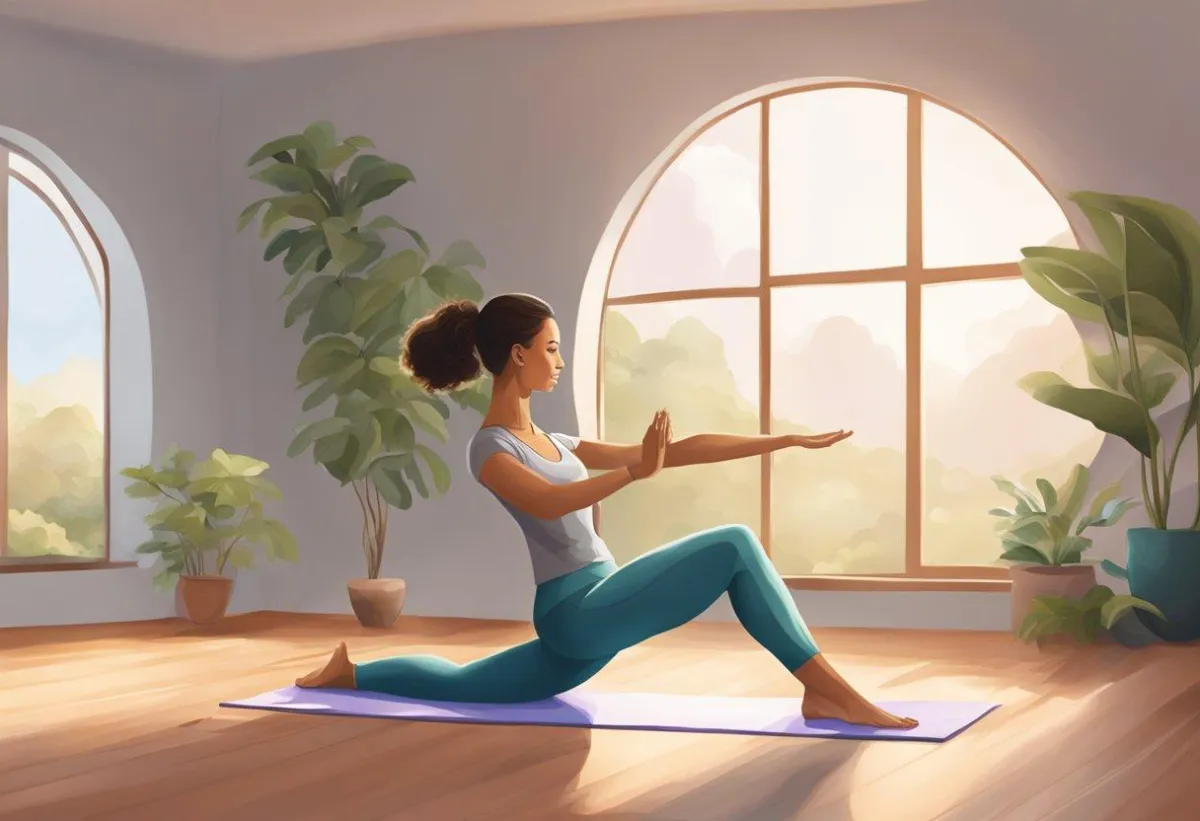
Integrative breathing in yoga focuses on combining breath with movement to enhance mental focus, mindfulness, and posture. Through specific breathing exercises, practitioners can achieve better relaxation and concentration, improving their overall yoga practice.
The Role of Breath in Yoga
In yoga, breath is essential for connecting the mind and body. It acts as a bridge between physical movements and mental concentration. The integration of breath, known as pranayama, helps to synchronize the inhalation and exhalation with asanas, promoting improved posture and balance.
Breath control enhances mental focus and fosters mindfulness. When the breath is steady, practitioners can maintain a calm and relaxed mental state. This allows for deeper engagement with each pose and reduces distractions, making the practice more effective.
Maintaining proper breathing patterns improves oxygen flow and energy levels. This not only supports physical endurance but also aids in mental relaxation, allowing practitioners to immerse themselves fully in their practice.
Breathing Exercises and Techniques
Various breathing exercises play a crucial role in integrative breathing. Techniques such as Ujjayi breath, or "ocean breath," involve inhaling deeply through the nose and exhaling with a slight constriction in the throat. This technique helps sustain a steady rhythm and focuses the mind.
Alternate nostril breathing, or Nadi Shodhana , balances energy and calms the nervous system. It involves inhaling through one nostril while closing the other, then switching. This technique promotes mental clarity and reduces stress.
Deep belly breathingencourages relaxation and stress relief. By expanding the diaphragm and abdomen with each breath, practitioners experience a calming effect, supporting overall mental and physical wellness. These exercises enhance the yoga experience by fostering a mindful connection to each moment.
Hot Yoga and CorePower Yoga
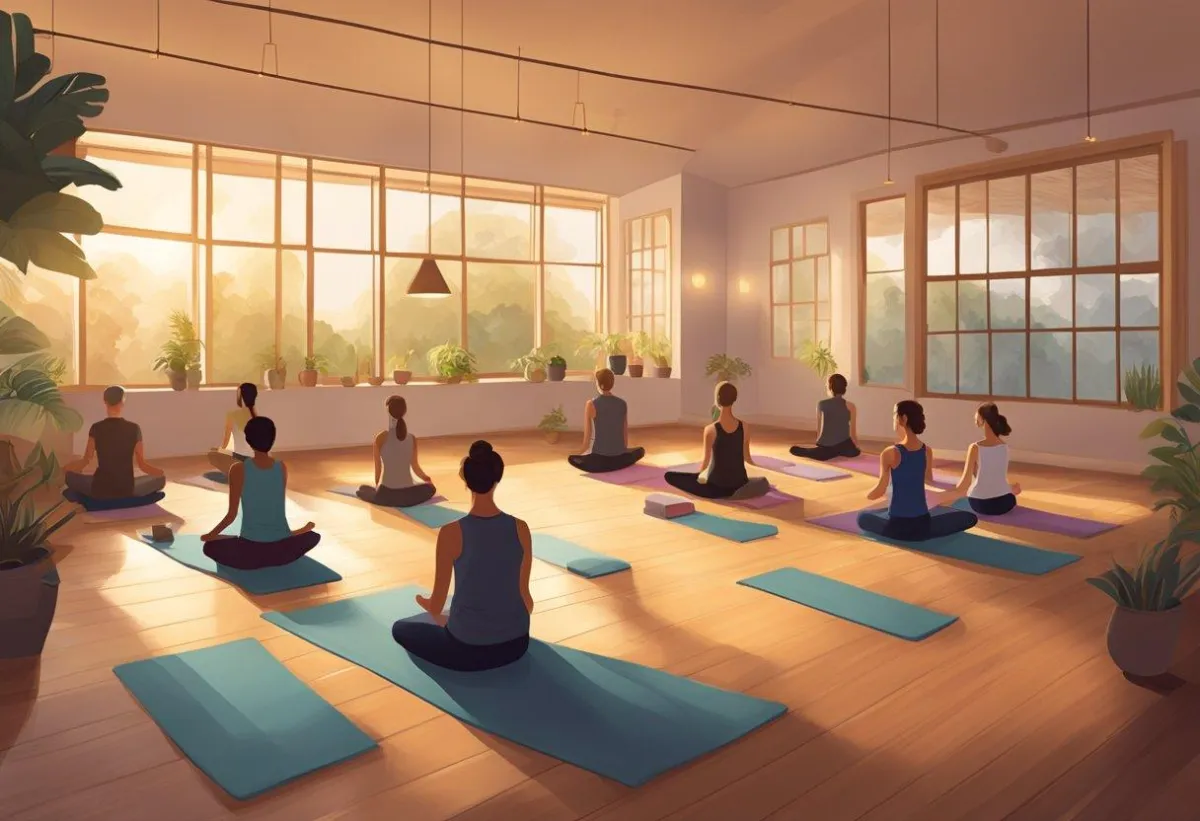
Hot Yoga and CorePower Yoga are two popular styles offering intense workouts with unique benefits. Hot Yoga emphasizes sweating and flexibility in a heated environment, while CorePower blends traditional poses with strength and core stability exercises.
Hot Yoga Essentials
Hot Yoga is performed in a heated room, typically between 90°F to 105°F, which encourages a high sweat level. The temperature helps to increase flexibility, making it easier to perform standing poses and deep stretches. Participants should hydrate before and after class to stay safe.
The physical benefits include improved strength and endurance. Practicing in heat challenges the body, promoting cardiovascular health. Enhanced core stability and balance are other key advantages that practitioners often notice after just a few sessions.
CorePower Yoga Framework
CorePower Yoga is known for combining traditional yoga and modern, high-intensity workout elements. It focuses on building strength through a series of dynamic poses and strength-training components.
Yoga Sculpt is a popular sub-style within CorePower that incorporates free weights. This approach helps in developing overall muscle tone and core stability, making it ideal for individuals seeking both flexibility and a robust workout. Strength training in this format enhances body awareness and physical resilience.
Advancing Your Yoga Practice
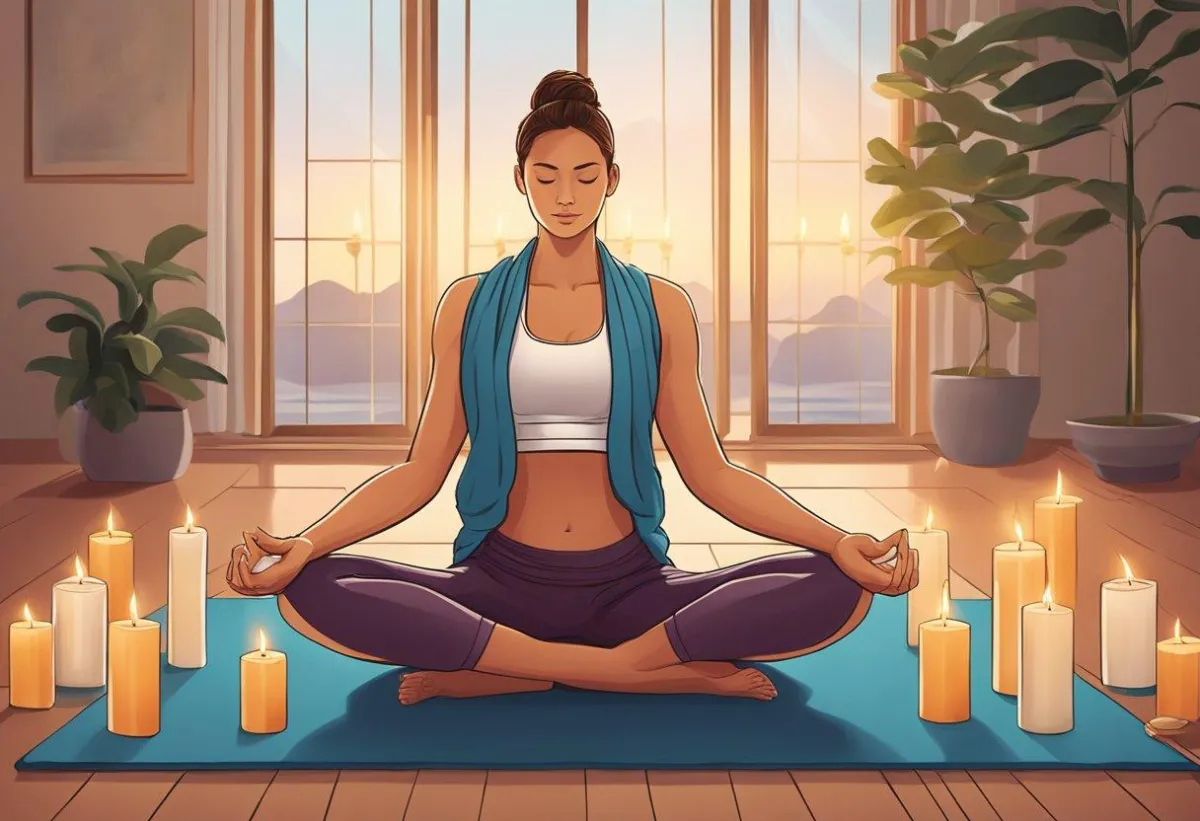
Enhancing your yoga practice involves progressing into advanced poses and focusing on strengthening specific areas of the body. Mastering challenging asanas requires dedication and attention to technique, while targeting different muscle groups can help improve overall strength and flexibility.
Transitioning to Advanced Asanas
Transitioning to advanced asanas such as the cobra pose and locust pose demands increased core strength and precise alignment. Practitioners should approach these postures gradually, ensuring that their foundation in basic yoga poses is solid.
Consistency in practice helps build the necessary stamina and flexibility. Standing poses
may serve as preparatory steps, laying the groundwork for more challenging asanas. It's important for individuals to listen to their bodies and avoid rushing the process to prevent injury.
Yoga for Specific Target Areas
Yoga can be tailored to focus on specific target areas like the hips and hamstrings. Personalized sequences designed to address these areas will enhance mental clarity and promote physical balance. Hamstring stretches and hip-opening poses are particularly effective for improving mobility and reducing tension.
Incorporating yoga practices aimed at areas such as the core can also be beneficial. Building
core strength not only supports a variety of poses but also promotes proper posture and alignment. Practitioners can integrate these targeted exercises into their routine to achieve a well-rounded practice.
Yoga Technology and Accessibility

Yoga technology plays a significant role in making yoga widely accessible. With digital platforms, practitioners can enhance their yoga experience while focusing on mental discipline and flexibility. Technology connects users with tailored sessions that fit their schedules and preferences.
On-Demand Yoga Classes
On-demand yoga classes have revolutionized how people practice yoga. Platforms offering yoga on demand allow individuals to choose classes that match their level and timing preference. This flexibility ensures a personalized yoga experience, catering to both beginners and seasoned practitioners.
Users benefit from video-guided sessions that can be accessed anytime, reducing barriers such as geographic limitations. The ability to replay classes enhances learning and mastery of poses, supporting mental focus and physical improvement.
Providers leverage advanced technologies like personalized marketing and cart reminders to enhance engagement and retention. Ensuring user consent when collecting data is crucial for maintaining trust and complying with regulations while offering personalized services.
Digital Engagement in Yoga
Digital engagement tools make yoga more interactive and involving. Apps and websites provide users with tools to track progress, set goals, and access a community of fellow practitioners. This engagement aids in sustaining motivation and improving adherence to yoga routines.
Many platforms offer live streaming sessions, which simulate a studio environment and foster a sense of community. These tools support mental concentration and offer immediate feedback, enhancing the overall yoga experience.
Considering data rates is essential, as streaming high-quality video can consume significant bandwidth. Providers aim to deliver a quality experience without undue cost, emphasizing the importance of practical technology solutions in yoga's digital realm.
Disclaimer
The training and nutrition plans provided are for informational purposes only and do not constitute medical advice. These plans are not intended to be a substitute for professional medical advice, diagnosis, or treatment. Always seek the advice of your physician or other qualified health provider with any questions you may have regarding a medical condition or before starting any new diet or exercise program.
Please note:
Consult with your doctor or healthcare provider before beginning any new exercise or nutrition program, especially if you have any pre-existing health conditions or are taking any medications.
Every individual is unique. What may be suitable for one person may be unsuitable or even harmful to another.
If you experience pain, discomfort, or any health concerns while following these exercise or nutrition recommendations, stop immediately and seek medical advice.
The authors and publishers of these plans assume no liability for any adverse effects that may result from the application of the information provided.
By using these training and nutrition plans, you agree that you are doing so at your own risk and that the authors and publishers will not be held responsible for any claims, losses, or damages arising from the use of this information.
Remember that health and wellness require a holistic approach. While these plans may complement professional advice, they should never replace it. Your health comes first – always act responsibly and seek expert guidance when in doubt.
